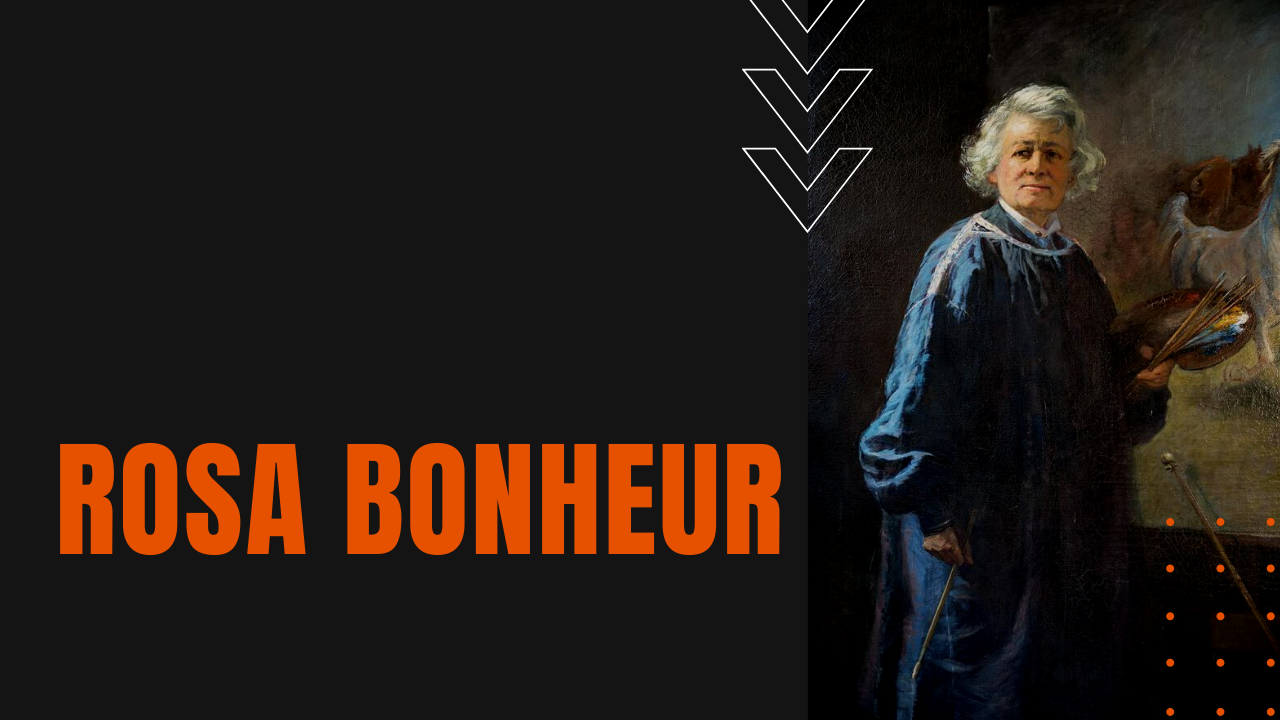Rosa Bonheur: Masterworks and Life of Eminent French Painter

The richest and most famous female artist of 19th century France, Marie-Rosalie Bonheur spent the last forty years of her life entrenched in her small chateau above the Seine River town of Thomery.
Since her death in 1899, her Chateau de By remains frozen in time—a near still life reflection of the artist’s daily routine. Her worn brown leather lace-up boots, matching riding gaiters and umbrella sit on a chair beside her artist’s smock. Her wire-rimmed eyeglasses rest on a low wooden desk. Her sheet music still sits perched upon her grand piano.
Bonheur’s Eccentric Life and Art
There were other female painters in her day, but none like Bonheur, who shattered female conventions of the time with her lifelike paintings of animals. That she was a woman with a gift for self-promotion contributed greatly to her celebrity—and her notoriety. So did her eccentric personal life. Preferring men’s clothing, she was a woman who never married and a champion of gender equality, not as a feminist for all women, but for her devotion to her art.
Sought after by royals, statesmen and celebrities alike, Empress Eugenie, the wife of Napoleon III, arrived unannounced to Bonheur’s chateau one day, and she was so impressed by artist’s work that she returned to pin the Legion of Honor on the painter’s bosom. “Genius has no sex,” the empress would later declare. Emperor Maximilian of Mexico and King Alfonso XII of Spain also decorated her, while Czar Nicholas II and Empress Alexandra of Russia met her at the Louvre, while composer Georges Bizet is said to have commemorated her with a now-lost cantata.
Rosa Bonheur’s Background
A tomboy from childhood, Bonheur was called a “boy in petticoats” by her grandfather. From an early age she focused on painting animals, which she believed had souls just like human beings. As a teenager living in Paris, Bonheur began copying paintings at the Louvre, and she learned how to draw and paint animals in motion with photographic precision.
At 19, she showed two small paintings at the prestigious Paris Salon, while in 1848 she won a special prize from the Paris Salon’s committee of famous French painters of the day. Soon after, she received a generous commission from the state of France, which resulted in her massive painting entitled Ploughing in the Nivernais, which still hangs in the Musee d’Orsay in Paris.
Today, her name and works are largely forgotten in France, although in 2019, the Musee d’Orsay featured a small exhibition of Bonheur’s little-known caricatures, which created renewed interest in her work.
